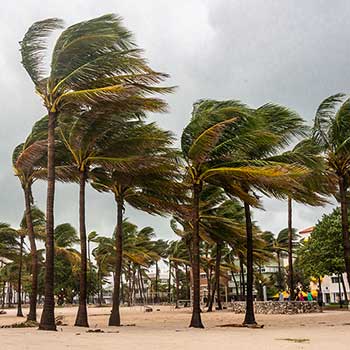The Geological Society of America has recently come out with studies pointing to Florida’s hurricane records while hinting at a new finding.
Many highlight the fact that there has been quite little research done on Florida’s East Coast hurricane past record, with the national hurricane database for this area extending back to only the 1850s. Studies have shown that within the past 170 years, Florida’s Atlantic Coast has experienced a smaller amount of intense hurricanes than Florida’s Gulf Coast.
Researchers collected sediment cores from various lagoons along Florida’s eastern coast which later showed that hurricanes leave an extremely coarse deposit referred to as a tempest. Ilexxis Morales, the study’s lead author, explains that the grains of sand being much coarser allows for researchers to detect ancient tempest deposits, saying “When a large storm comes through the area, it picks up light-colored sand from the beach and deposits it in the lagoon.”
From there, researchers used a lead-210 germanium detector and radiocarbon dating to continue their studies, finding that there are fewer visible tempestites in the East Coast compared to the West. These findings have led researchers to believe that the pattern of more major hurricanes hitting Florida’s Gulf Coast more may have extended back thousands of years in history. “When the Bermuda High is in a more northeasterly position, hurricanes tend to track along Florida’s East Coast and up to the Carolinas,” says Morales. “When it shifts southwestward towards the U.S., the high tends to push storms into the Gulf of Mexico instead. Normally the Atlantic is colder than the Gulf, and this colder water makes it harder for hurricanes to sustain their strength.”
Once these studies are complete, this information will potentially assist researchers in determining whether or not changes are related to human-induced climate change, as well as giving insight into the future of his state.





